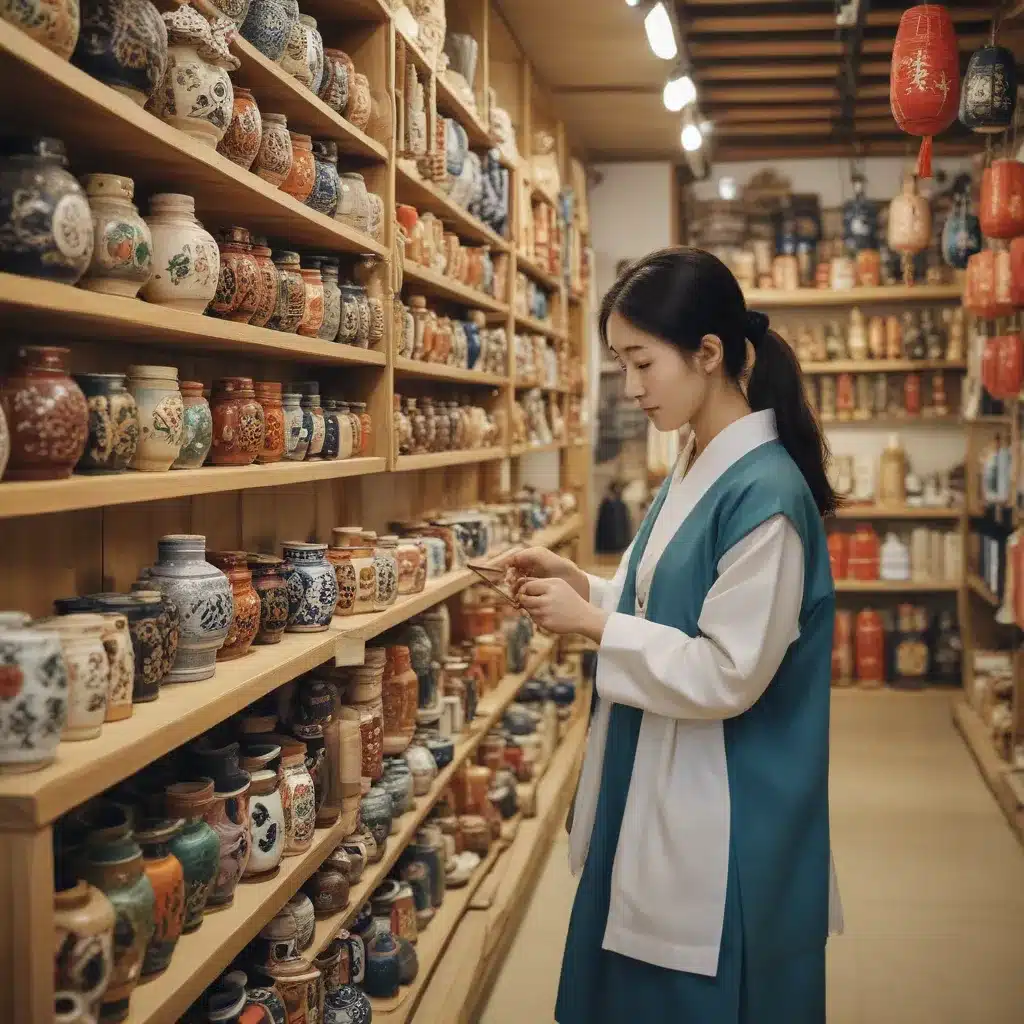
Uncovering the Gems of Seoul’s Vibrant Artisan Scene
As I stroll through the winding alleyways of Seoul, my senses are immediately captivated by the rich tapestry of traditional Korean handicrafts on display. From the intricate patterns of handwoven textiles to the delicate brush strokes of porcelain masterpieces, the city seems to pulse with the heartbeat of its age-old artisanal traditions.
It’s no secret that Seoul is a bustling, modern metropolis, but amidst the towering skyscrapers and neon-lit streets, there lies a captivating world of artisans who are keeping the flame of Korea’s cultural heritage alive. And as someone who has always been drawn to the beauty and craftsmanship of handmade goods, I’m on a mission to uncover the top spots where you can immerse yourself in this vibrant artisan scene.
Experiencing the Masters of Craftsmanship
One of the first places I stumble upon is the Insadong neighborhood, renowned as the epicenter of traditional Korean arts and crafts. As I wander down the bustling streets, I’m met with a dazzling array of galleries, shops, and workshops, each one a treasure trove of exquisite handmade treasures.
I find myself drawn to a small, unassuming shop, its windows adorned with delicate celadon pottery pieces. As I step inside, I’m greeted by the gentle smile of the proprietor, a master artisan whose family has been crafting these iconic Korean ceramics for generations. With a twinkle in her eye, she invites me to observe the intricate process, from the careful mixing of the clay to the meticulous application of the signature celadon glaze.
“Each piece is a labor of love,” she explains, her hands gently caressing a freshly-fired vase. “We pour our hearts into every creation, hoping to preserve the timeless beauty of this ancient art form.”
I nod in awe, mesmerized by the seamless fusion of tradition and artistry. As I browse the shop, I can’t help but marvel at the stunning array of bowls, vases, and decorative pieces, each one a testament to the artisan’s unwavering dedication and skill.
Exploring the Vibrant Textile Traditions
Leaving the celadon workshop, I continue my journey through Insadong, stopping to admire the vibrant tapestries and intricate embroidered pieces displayed in the windows of local textile shops. It’s here that I discover the rich heritage of Korean textile arts, a tradition that has been woven into the fabric of the nation’s cultural identity for centuries.
One particular store catches my eye, its shelves brimming with the delicate, colorful fabrics of traditional Korean hanbok dresses. I step inside, eager to learn more, and am greeted by a passionate young artisan who eagerly shares her knowledge.
“The hanbok is more than just a garment,” she explains, her fingers tracing the intricate floral patterns embroidered onto a vibrant silk gown. “It’s a living, breathing expression of our cultural heritage, passed down through generations of skilled artisans.”
As she guides me through the various techniques and materials used in hanbok-making, I’m struck by the sheer complexity and attention to detail that goes into each piece. From the meticulous hand-stitching to the vibrant dyes extracted from natural sources, every element is a testament to the artisan’s unwavering dedication to their craft.
Discovering the Artistry of Paper-Making
Intrigued by the depth of Korea’s textile traditions, I decide to delve even deeper into the realm of traditional handicrafts. My next stop is the Korea Craft and Design Foundation, where I’m greeted by the serene sight of a small workshop dedicated to the ancient art of Korean paper-making.
As I step inside, the air is filled with the soothing sounds of water lapping against the wooden screens, and the rhythmic motion of the artisans’ hands as they deftly manipulate the delicate pulp. I watch, captivated, as they transform simple plant fibers into the exquisite hanji paper that has been an integral part of Korean culture for centuries.
“Hanji is more than just a material,” one of the artisans explains, her eyes shining with pride. “It’s a reflection of our connection to the natural world, a canvas for our artistic expression, and a vital part of our cultural heritage.”
I nod, understanding the reverence with which these artisans approach their craft. As I examine the delicate sheets of hanji, I’m struck by the subtle variations in texture and color, each one a unique work of art.
Celebrating the Enduring Spirit of Korean Craftsmanship
As my journey through Seoul’s vibrant artisan scene draws to a close, I find myself overwhelmed by the sheer depth and richness of the traditional Korean handicrafts I’ve encountered. From the captivating ceramics of Insadong to the mesmerizing textiles and paper-making traditions, I’ve been humbled by the unwavering dedication and artistry of the skilled artisans who are keeping these ancient crafts alive.
And as I reflect on my experiences, I can’t help but feel a deep sense of admiration and appreciation for the enduring spirit of Korean craftsmanship. In a world increasingly dominated by mass-produced goods, these artisans are steadfastly preserving the timeless beauty and cultural significance of handmade creations, reminding us all of the value and power of the human touch.
So, if you find yourself in Seoul, be sure to explore the city’s vibrant artisan scene and immerse yourself in the rich tapestry of traditional Korean handicrafts. Who knows – you might just discover your own unique piece of this captivating cultural heritage. And if you’re looking for a luxurious home base to call your own during your stay, I’d highly recommend checking out Hotel Stay Inn Seoul – a stunning boutique hotel that perfectly blends modern comforts with the timeless charm of Korean tradition.

